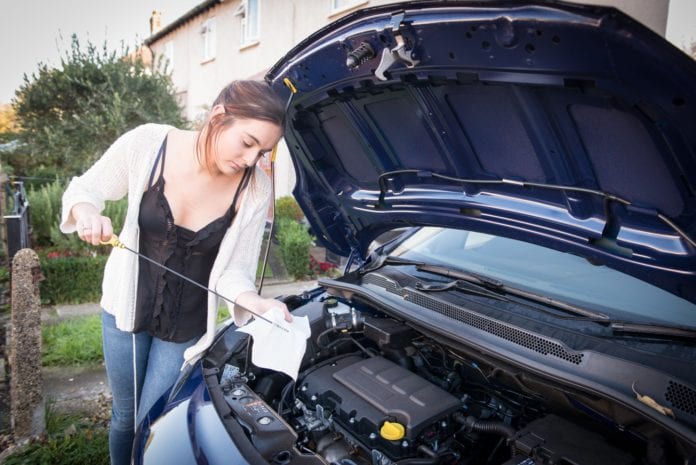Basic car maintenance isn’t difficult. A few quick checks will make sure your car is safe and roadworthy. Doing simple jobs yourself could also save you money. If you handle everyday basics yourself you won’t have to pay a garage to do it for you.
We’re not talking about taking an engine to pieces or replacing suspension components. We’re thinking of basic car maintenance that anyone can do in just a few minutes. Things like…

Checking tyres
Looking after your car’s tyres is really important. Everything the car does – braking, accelerating, cornering – all depends on those four patches of rubber in contact with the ground.
Your basic car maintenance routine should include checking the tyres once a week. Make sure they are inflated to the correct pressure. You’ll find the pressure listed in the car’s handbook or on a sticker inside the fuel-filler cap or on the driver’s door sill. You can use a hose at a garage, or a tyre inflator that plugs into the car’s 12-volt socket. Don’t forget to check the spare wheel as well.
As you check the pressures, have a look for any cuts, bulges or other damage.
It’s also really important your tyres have enough tread left, otherwise, they won’t grip well in wet weather. There should be 1.6mm of tread all the way around the tyre and across the central three-quarters of the tyre.
Use a 20p coin for a quick and easy tread depth check. Put the coin into the tread. If the outer rim of the coin disappears there’s enough tread. If you can still see the outer rim it’s time to replace the tyre.
Checking the oil
Regular basic car maintenance should include an oil check every few weeks, and before any long journey.
- Park the car up on level ground, and leave the engine to cool for 10 minutes. This will give time for the oil to drain back into the sump.
- Pop open the bonnet and find the dipstick. It’s usually pretty easy to see but check in the car’s handbook if you are not sure.
- Pull out the dipstick, and wipe it clean with a rag or paper towel. Put it all the way back in, then pull it out again. Hold the dipstick in a horizontal position.
- There should be two lines on the dipstick. The oil level should be somewhere between these two lines, ideally closer to the higher of the two.
- If it’s below both lines, you urgently need to add oil. If it’s towards the lower line, a top-up is a smart move but not so urgent.
Adding engine oil
If the engine oil is running low, you’ll need to buy some more and add it to the sump. There are lots of different kinds of engine oil, and it’s important to use the right type. Take a look at the car handbook, or use an online oil finder tool.
- Find the oil filler cap, and unscrew it.
- Place a funnel in the hole so you don’t spill any oil.
- Top up the level a little at a time, checking the level using the dipstick to make sure you don’t overfill the sump.
- When the level is close to the top line on the dipstick you’re done.
- Screw the filler cap back in place, close the bonnet, and you’re good to go.
Windscreen washer
Another really easy but important basic car maintenance task is topping up the windscreen washer fluid. A modern car will generally have a warning light to tell you when a top-up is needed. Don’t necessarily wait for the level to run low, though.
Open the bonnet, and find the windscreen washer cap. It usually has a windscreen/water symbol on it. Simply open the cap, put a funnel in place so you don’t make a mess, and pour in the washer fluid.
Don’t just use water – it won’t get the screen clean. And washing up liquid damage paintwork. Use proper windscreen washer fluid, it’s not expensive and it will get the job done. Read the label, as different strengths may be recommended for different seasons.
More to learn
Those are some maintenance basics. There’s always more to learn, and if you like tinkering with mechanical things you may want to go further. There are lots of Youtube ‘How to’ videos to help. Just don’t get over-confident. Use a professional garage for more complex maintenance unless you really know what you are doing.



